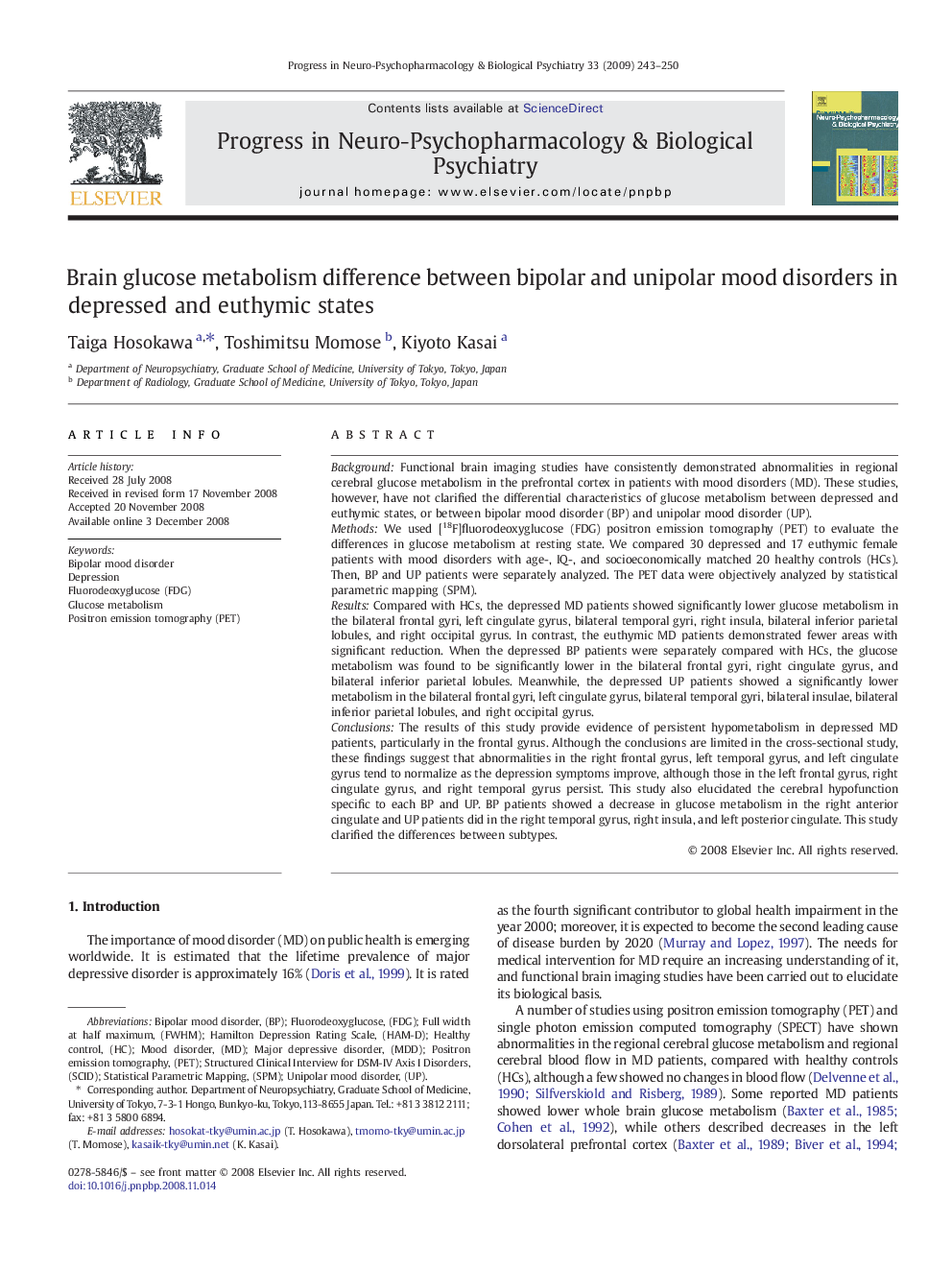| کد مقاله | کد نشریه | سال انتشار | مقاله انگلیسی | نسخه تمام متن |
|---|---|---|---|---|
| 2566401 | 1128082 | 2009 | 8 صفحه PDF | دانلود رایگان |

BackgroundFunctional brain imaging studies have consistently demonstrated abnormalities in regional cerebral glucose metabolism in the prefrontal cortex in patients with mood disorders (MD). These studies, however, have not clarified the differential characteristics of glucose metabolism between depressed and euthymic states, or between bipolar mood disorder (BP) and unipolar mood disorder (UP).MethodsWe used [18F]fluorodeoxyglucose (FDG) positron emission tomography (PET) to evaluate the differences in glucose metabolism at resting state. We compared 30 depressed and 17 euthymic female patients with mood disorders with age-, IQ-, and socioeconomically matched 20 healthy controls (HCs). Then, BP and UP patients were separately analyzed. The PET data were objectively analyzed by statistical parametric mapping (SPM).ResultsCompared with HCs, the depressed MD patients showed significantly lower glucose metabolism in the bilateral frontal gyri, left cingulate gyrus, bilateral temporal gyri, right insula, bilateral inferior parietal lobules, and right occipital gyrus. In contrast, the euthymic MD patients demonstrated fewer areas with significant reduction. When the depressed BP patients were separately compared with HCs, the glucose metabolism was found to be significantly lower in the bilateral frontal gyri, right cingulate gyrus, and bilateral inferior parietal lobules. Meanwhile, the depressed UP patients showed a significantly lower metabolism in the bilateral frontal gyri, left cingulate gyrus, bilateral temporal gyri, bilateral insulae, bilateral inferior parietal lobules, and right occipital gyrus.ConclusionsThe results of this study provide evidence of persistent hypometabolism in depressed MD patients, particularly in the frontal gyrus. Although the conclusions are limited in the cross-sectional study, these findings suggest that abnormalities in the right frontal gyrus, left temporal gyrus, and left cingulate gyrus tend to normalize as the depression symptoms improve, although those in the left frontal gyrus, right cingulate gyrus, and right temporal gyrus persist. This study also elucidated the cerebral hypofunction specific to each BP and UP. BP patients showed a decrease in glucose metabolism in the right anterior cingulate and UP patients did in the right temporal gyrus, right insula, and left posterior cingulate. This study clarified the differences between subtypes.
Journal: Progress in Neuro-Psychopharmacology and Biological Psychiatry - Volume 33, Issue 2, 17 March 2009, Pages 243–250